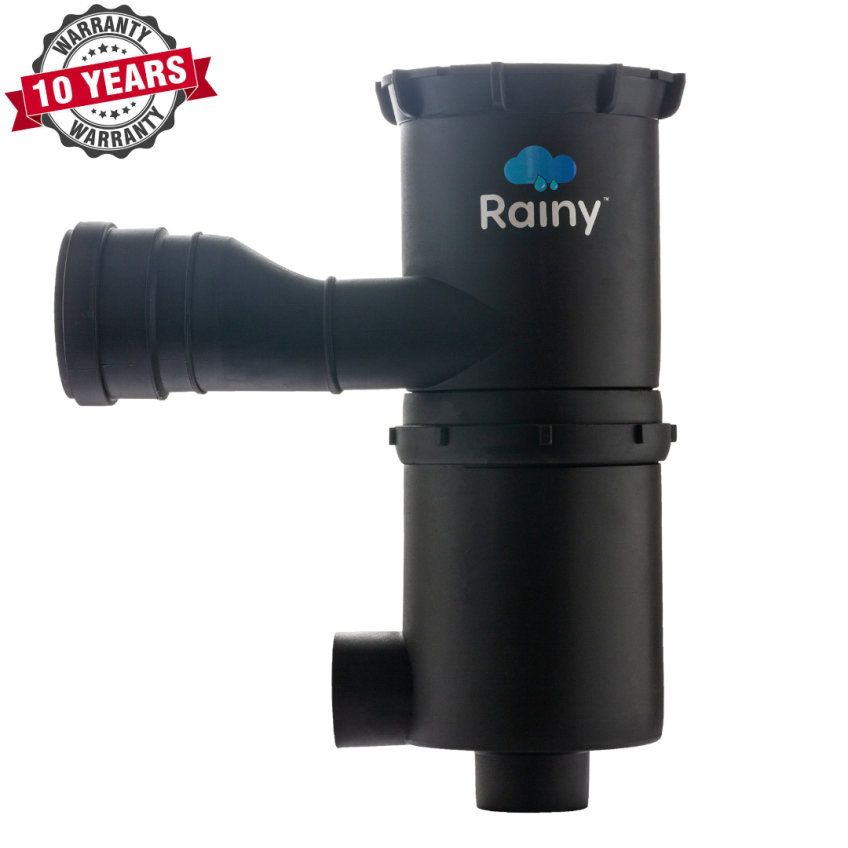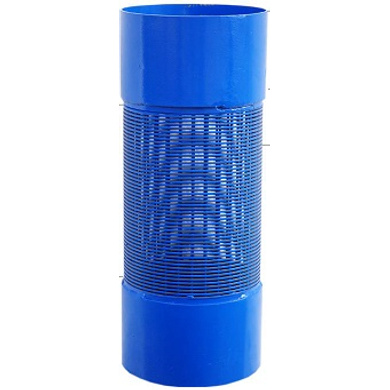Types of rainwater harvesting filters
The lack of freshwater resources makes it tough to meet the standard water demand. Collection of rainwater from rooftops, runoff, roads, open ground, etc; for utilization is known to be rainwater harvesting. Rainwater can be stored or can be used to recharge the groundwater table.
Groundwater is the primary source of fresh water, and demand for water is increasing in the domestic, agricultural, and industrial sectors. Despite the advanced technologies or devices being introduced to reduce water wastage, the world is leading to an increase in water demand.
Rainwater harvesting is a simple plan of action designed for meeting long-term water demand for future use. The series of actions involves the help of artificially designed systems to collect and store rainwater. Rainwater from any surface is collected and sent for filtration, storage, and utilization for various purposes and also can be directly used for groundwater table recharge.
With depleting groundwater levels and fluctuating climate conditions, rainwater harvesting helps mitigate the worse condition of rising water scarcity. Retaining rainwater for future use also helps to directly recharge local aquifers, ensures the availability of water in water-stressed areas, and aids in the reduction of flooding.
Rainwater harvesting aids in meeting the world's ever-increasing water demand. It helps improve the quantity and quality of groundwater when used for direct recharge.
Mechanical Pre-tank Filters
Most rainwater filter methods include mechanical pre-tank filters. The pre-tank filters stop contaminants like dirt and debris from entering the storage tank of the rainwater harvesting system.
Pre-tank filters, in general, consist of a stainless-steel structure protected by a plastic body, though some models are entirely plastic. The structure is usually made of stainless mesh or grill. The mesh quality is measured in microns. Depending on the design, the lesser the micron rating the finer the degree of filtration.
There are two types of mesh: horizontal mesh and vertical mesh. This horizontal mesh requires more often cleaning than the vertical mesh. Some models have advanced features such as built-in cleaning functions that use water jets.
Depending on the requirements of specific situations. Certain advancements or additional filtration treatments are required. For instance, some industrial systems need water that has been microscopically filtered, and some procedures might need water that has been sterilised.

Microscopic Filtration
We can successfully achieve first-rate filtration using microscopic filtration and specific filters. These filters now come in the form of a sealed structure containing a cartridge or bag that traps fine particles and provides pristine water.
These types of filters require pressure for its proper operation. Pumping requires pressure, or water is forced through. These filters are commonly found in pumper water supplies. They are typically expensive and used in large-scale systems.
The advanced version of filters includes stainless steel elements with a backwash function to facilitate cleaning. Cleaning can also be done manually or with an automatic timer control, which is effective and requires little maintenance.
Another technology is membrane technology, which uses high pressure to force water through a layer of material with microscopic holes that trap particles. Membrane technologies of this type are typically used in large-scale commercial projects.
Disinfection
Mechanical filters give intended results in removing dirt and debris from the water, which is not suitable to remove bacteria in water.
When rainwater is going to be used for purposes such as drinking, showering, personal uses, etc. The process of cleaning water, particularly with a chemical, to destroy bacterial content is then critical.
Disinfection is further done by several methods such as using chemical dosing, Reverse Osmosis (RO), or Ultra-Violet light (UV). The most common method is UV disinfection, when properly maintained; the UV method is a reliable and safe method. This method sterilizes water by exposing it to Ultraviolet light at a specific intensity and wavelength while it passes through a glass tube. Water microorganisms are destroyed, and the water is sterilized instantly. The annual replacement of UV lamps makes maintenance simple.
Carbon Filters
If rainwater is to be used for drinking, additional treatment such as carbon filtration is required Rainwater collected in a carbon filter passes through carbon, where water odour and taste are being improved. The carbon filter also helps to reduce discoloration in water. This is a common technique used in households to filter water in jugs and under-sink units. Carbon is also effective at removing chlorine and other volatile organic substances (VOCs). A Granular Activated Carbon module can be added to any rainwater system, or used as a stand-alone unit.
Sand and gravel
Sand and gravel-type of filters are made using bricks, which are filled using three layers of substances such as pebbles, gravel, and sand. These three layers of the bed are separated using mesh wire. This type of filter is very common. Water flows through gravity here, removing different size particles as it passes through each layer of pebbles, gravel, and sand.
Charcoal filters
Charcoal filters are made of three layers, a gravel layer, a sand layer, and then the final charcoal layer. Wire mesh is also used to separate the three layers in this filter. The purpose of the charcoal in this filter is to absorb the foul odour present in the water.
PVC- Pipe filter
These filters are made of PVC pipes. Which has a diameter of 6-8 inches and a length of 1-1.2 meters. There are three layers, and the pipe is divided with wire mesh, into three layers. Layer 1 contains gravel; Layer 2 contains charcoal and Layer 3 contains sand. The endpoint of the filters is designed in such a way that it matches the size of the outlet and inlet. These filters can be installed both vertically and horizontally.
Sponge Filter
The sponge filter is structured using a PVC drum. This includes a spongy layer in the middle of the drum. This filter is suitable for residential purposes. It is also an economic kind of filter.
Potable rainwater catchment system- rooftop water landing
Level 1: Gutter Guards:
Removes large debris and dirt that are collected from your roof. To prevent clogging, leaf decay, and built of bacteria, it is essential to screen the leaf substances on a regular basis.Level 2: First Flush Diverter:
FFD's first flush diverter comes between the gutter guard and tank, which routes the first flow of water from the roof away from a storage tank. Water from the first rain may contain small particles such as dust, insect bodies, pollen, animal faeces, pesticides, and other contaminants. Water from the first flow can be routed to a garden or plantations.Level 3: Overflow Skimmer:
The overflow skimmer is the first point at which rainwater enters the tank, which benefits the catchment system. Overflow skimmer removes the finest surface contaminants from the tank and simultaneously overflow siphons keep the tank from overflowing. This layer will give you a clean water zone and intake for the next layer.Level 4: Floating Extractor:
The floating extractor is designed to extract water from the cleanest zone of rainwater. This zone in the storage tank is about 4 inches below the top of the water. This is preferable to drawing water from the tank's bottom, where heavy sediment settles, and it also avoids small skimming particles from the top.Level 5: Spin down Filter:
The Spin down Filter uses the quantity of motion, mass, and velocity of the water to throw particles out of the stream, which settles in the lowest area of the filter. The spin-down gets effortlessly rinsed through the bottom valve, which can be back-flushed, and used over and over again. It does not require extensive maintenance or replacement filters, extending the life of subsequent canister filters.Level 6: Filter Canister:
Filter Canister is 5, 10, and 20 microns. This assists the next layer in the structure and the ceramic filter in remaining clean. The filter size and input quality must be changed on a regular basis, depending on the maintenance to be performed.Level 7: Ceramic Filter:
The ceramic filter puts a considerably intense clean finish on the water setup. Before entering, it should be filtered to 5 microns, which means less cleaning and fewer chances of breaking the ceramic candles.Rainy Self-cleaning Roof Top Filter System
The operation of self-cleaning filters is intended for one or more downspout outlets. The design incorporates a hollow pipe that leads into the filter inlet. This filter is designed to accept both high and low-intensity loads that separate dirt and debris that enter the filter with the rainwater via the hollow pipe. Along with the self-cleaning mechanism, it operates on the cohesion and centrifugal force principles.
Because it is open-ended, it allows for free flow. The vertically placed steel mesh prevents dirt, debris, and leaves from accumulating in the filter. The filter includes a self-cleaning mechanism. The open end leaning toward the drain prevents solid substances from accumulating inside the vertical filter.
The intensity of rainfall has a direct relationship with stability and filter function efficiency. The filter's efficiency increases as the intensity and volume of rainfall increase. At any given time, the minimum efficiency of the filter ranges from 90 to 98% from outlets that can use it effectively as needed. It is built with a hollow pipe that leads into the Rooftop Filter's filter inlet.
This filter has the following features: compact size, wall mounting, SS 304 filter element, user-friendly, 250-micron dual intensity, auto flush out, high efficiency and works even on low intensity of rain.

V wire Technology
Farmland Rainwater Harvesting Systems' FL' V'-Wire injection well technology, developed in 2002, was significantly improved in 2007 is used for groundwater recharging . Here, gravitational energy is used.
A silt trap unit, a recharge well with 20% filtration media of crushed stone, gravels, coarse sand, activated carbon, and charcoal; and the rest for water storage and a recharging bore at the bottom of the recharge well comprise the entire structure.
Rainwater reaches the silt trap, which prevents silt from entering the chamber. Overflow of water runs through a horizontally connected pipe into the injection well fitted with the FL ‘V’-Wire filter unit. Water travels through a multilayer of filtration media placed at the top of the Injection Well.
In the storage well, a water column is formed beneath the filter media. The percolator pipe is installed at higher depths of 30 to 60 metres below ground level by boring through permeable strata and attaching it to the non-clogging FL V-wire screen. Water is filtered as it travels through the permeable layer. Water travels through the permeable layer due to gravity and reaches the dry joints, cracks, and weathered zone, where it recharges the aquifer that holds the groundwater.

Conclusion
Rainwater storage and treatment methodology contribute to several problems of the global water crisis. Reduces over usage of groundwater and reduces carbon footprint by minimizing the pumping capacity. It is a systematized means of water management, an economically efficient method.


